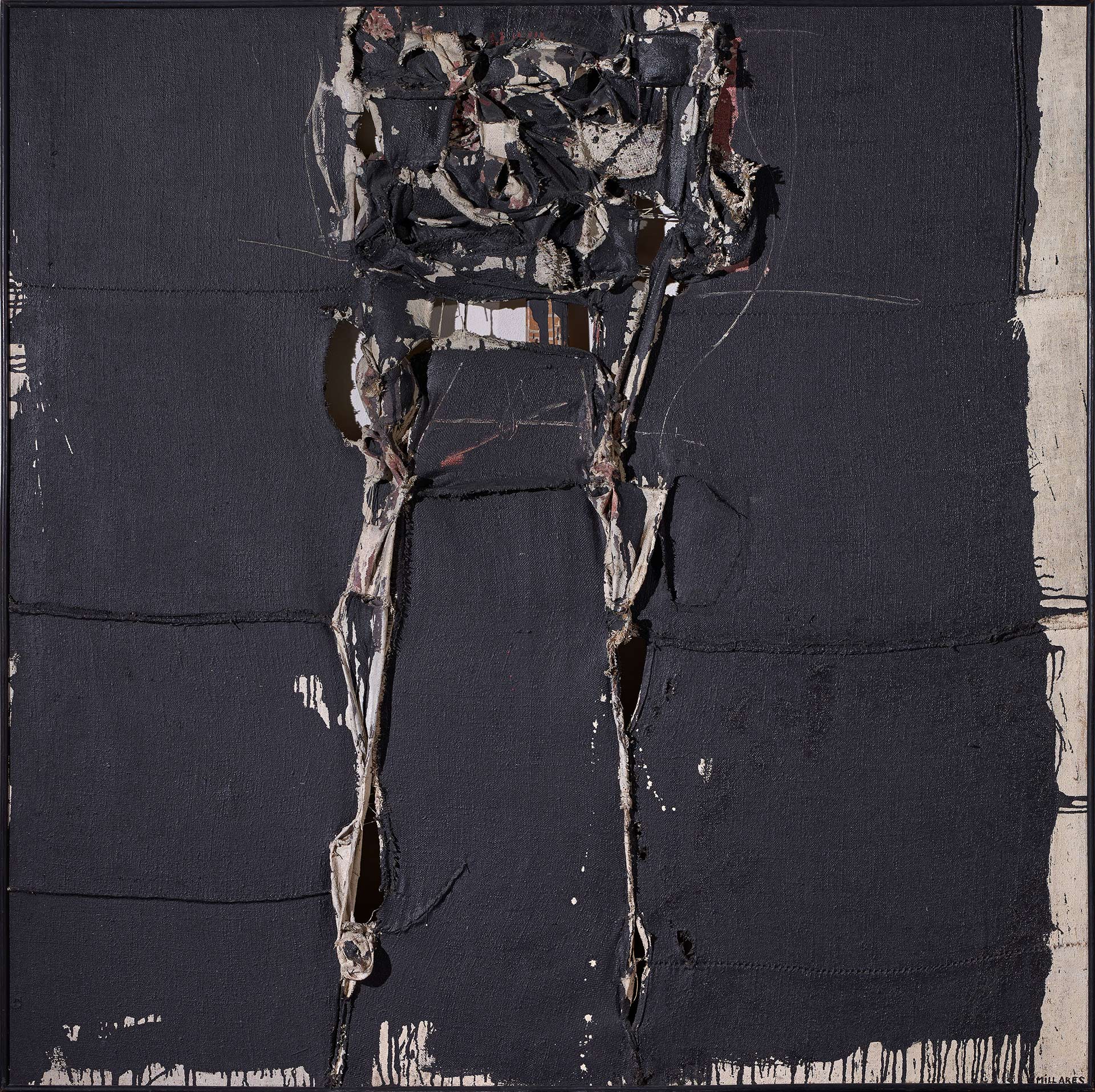
Manuel Millares (Las Palmas de Gran Canaria, 1921 – Madrid, 1972)
Homunculus
1960
WORK INFORMATION
Mixed media, 200 x 200 cm
OTHER INFORMATION
Signed in the lower right-hand corner: "Millares" Inscription on the reverse, on the stretcher: "200 x 200 cm Millares: Homúnculo, 1960"
Manolo Millares was one of the artists who most precisely defined the ideals of the El Paso group. His compositions are dominated by the expressive, dramatic quality of his painting, the preoccupation with matter and the progressive reduction of colour. His works, which incorporate relief thanks to the use of hessian, evince an unprecedented emphasis on matter. The support ceases to be the surface on which paint is applied and becomes the uncontested protagonist.
Before creating this language, Millares had engaged in different experiences without which he could not have developed a coherent interpretation of Art Informel. In Las Palmas, during the 1940s, he became interested in Surrealism thanks to the painting of Paul Klee and Joan Miró and, searching for the primitive roots of art, in studying the indigenous Guanche culture. These interests inspired him to create his Pictografías [Pictographs] in 1951. Millares later abandoned this path and turned his attention to the world of matter, beginning to turn out works painted on hessian.
In 1955 he moved to Madrid and paid the requisite visit to Paris. In 1957 Millares and his fellow artists Canogar, Feito, Saura, Suárez, Juana Francés and Serrano founded the El Paso group, representing the most brazen, expressive branch of Spanish Art Informel. Viola and Chirino joined the following year.
The Homúnculo [Homunculus] from 1960 is an example of the expressive extremes reached by Millares in his work with hessian, crumpled like Guanche mummies and treated with a very limited palette of black and white. These colours accentuate the tattered pathos of the image and, in the collective imaginary, are associated with the idea of death, an idea that Millares pitches like a ragged scream of protest against the suffocating world around him. The same effect is achieved in his 1969 Homunculus, but this time using white. The pathetic expressivity of white is articulated by the powerful presence of the textured reliefs in the hessian and the active role played by black and the distorted handwriting that appears in different parts of the picture. These approaches, taken to the limit in works like Painting, operate in the field of abstraction, but figurative echoes linger thanks to the corporeality of the hessian. These are not represented references but presented material realities through which the artist reveals a ragged connection to the surrounding world. [Víctor Nieto Alcaide]

